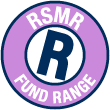



David Coombs and Will McIntosh-Whyte manage all the funds in the range of Rathbone Multi-Asset Portfolios. David Coombs has been a lead manager on the strategies since their launch. Both managers are supported by the wider Multi-Asset team at Rathbones. The six funds within the Rated Fund Range all aim to achieve capital growth with specific growth and volatility targets that increase through the range. The portfolios will contain a mixture of passive and active investments through direct and collective holdings, although there has been a move towards more direct holdings recently, partly to reduce costs.
|
Fund |
Sector | Launch Date | Volatility Target |
|---|---|---|---|
| Rathbone Total Return Portfolio | IA Volatility Managed | 08/06/2009 | One-third of global equities |
| Rathbone Defensive Growth Portfolio | IA Volatility Managed | 19/06/2020 | One half of global equities |
| Rathbone Strategic Growth Portfolio | IA Volatility Managed | 08/06/2009 | Two-thirds of global equities |
| Rathbone Dynamic Growth Portfolio | IA Volatility Managed | 19/06/2020 | Five-sixths of global equities |
| Rathbone Enhanced Growth Portfolio | IA Volatility Managed | 01/08/2011 | Equal to global equities |
| Rathbone Strategic Income Portfolio | IA Volatility Managed | 01/10/2015 | Two-thirds of global equities |
The approach taken for the six multi-asset funds is to build portfolios to maximise the return for a given risk budget. The portfolios have target return objectives – Total Return Portfolio = Bank of England’s Base Rate + 2%, after fees, over any three year period; Defensive Growth Portfolio = CPI + 2%, after fees, over any rolling five year period; Strategic Growth Portfolio = CPI + 3%, after fees, over any rolling five year period; Dynamic Growth Portfolio = CPI + 4%, after fees, over any rolling five year period; Enhanced Growth Portfolio = CPI + 5%, after fees, over any rolling five year period; Strategic Income = an income of 3% or more each year but also aims to deliver a total return of CPI + 3%, after fees, over any rolling five year period. In addition, all of the funds have volatility targets relative to global equities as detailed above.
The portfolios are well- diversified, hybrid, multi-asset funds. They invest in traditional long-only equity and fixed income funds and also use alternative investments including hedge funds, commodities, private equity and structured products. The managers emphasise that the funds are run with a core belief of maintaining the real value of capital over time. The investment process has several tiers including a macro overview that provides a top down strategic allocation and is set by the Strategic Asset Allocation Committee (SAAC), which meets quarterly. The output from the Strategic Asset Allocation Committee steers the bottom-up research effort by identifying particular geographic areas, industry sectors or investment strategies that are likely to outperform in the future. The research undertaken by the collectives team is debated with the client teams to ensure the resulting portfolios are populated with funds which are appropriate for client use. There are six separate asset class committees that debate a range of areas including equity, fixed income and property sectors. The asset allocation process is split into two parts – strategic and tactical – and the manager also has the flexibility to move the portfolios without reference to the SAAC if the conditions require faster action. They focus on correlation, volatility and relative value with close attention paid to risk versus reward over the long term. They divide the asset classes into three categories liquidity, equity type risk and diversifiers based on their correlation characteristics and the relative position of these is considered more important than being overweight/underweight by geography. Beta is derived from the economic/credit cycle by analysing the relative risks and diversifying through investing in areas designed to reduce correlation rather than by merely adding lots of different asset classes together. The allocations within each individual category are disciplined by limits. The key ‘risk lever’ and starting point is the allocation to beta.
The portfolios are run by an experienced team that seeks to match a risk and return budget for each portfolio over the life cycle of the investor. Close attention is paid to the risks within the portfolios and their liquidity, and the correlation of assets held in the underlying funds. The managers have a diverse range of assets in the portfolios and are prepared to use these with conviction. They offer a true multi asset alternative and do not have a geographically managed approach, typical of many in their peer group. We think this allows them to focus on the objectives of the funds and provide truly differentiated alternatives.
Important Notice
This document is aimed at Investment Professionals only and should not be relied upon by Private Investors. Our comments and opinion are intended as general information only and do not constitute advice or recommendation. Information is sourced directly from fund managers and websites. Therefore, this information is as current as is available at the time of production.
Rayner Spencer Mills Research Limited is a limited company registered in England and Wales under Company. Registration Number 5227656. Registered Office: Number 20, Ryefield Business Park, Belton Road, Silsden, BD20 0EE. RSMR is a registered trademark.